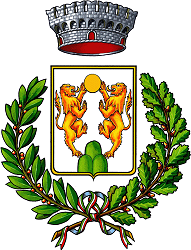Along the Adriatic side of the Apennines, on the ridge that forms the watershed between the basins of Carapelle and the Ofanto, lies the town of Bisaccia, whose village is gathered on a spur of Mount Calvary (970 m), wedged between two ravines to the head of the valley Isca, right tributary of the river Calaggio. Due to its geological structure, it is called a “raft conglomerate rock with adhesive clay.” Along the main road of Formicoso is the modern agglomeration of Bisaccia Nuova, built according to a rigorously geometrical plan, after the earthquake of 1930.
According to tradition and ancient routes of the Appian Way, which connected Rome to Brindisi, on the territory of the ancient Romulea Bisaccia, built by the Samnites as “oppidum” meaning fortress, with the function of territorial defense. Plundered and subjected to the 296. C. by the Romans, along with other cities in Irpinia, also Romulea rebelled to regain their independence, but won by Appio Claudio, was rebuilt on the ruins of “oppidum”. From this circumstance could derive the name of Bisaccia: Bis acta (done twice), or Bis Arx to indicate the new Roman garrison. In fact the source is not secure, the name could also be linked to Byzantine rule, even before the Lombards conquered the city, making it fall within Gastaldato of Conza, and were based on bastion of control from which it took origin the castle; In fact, the emblem of Bisaccia with two lions rampant, is the symbol of their power, and along the border, facing each of three mountains of the Apennines.
After the Lombards Bisaccia was conquered by the Normans, and began a period of peace and economic prosperity, with the spread of small peasant property with the practice of “pastinato”. In 1246 the Lord of Bisaccia Richard I was stripped of his fief by Emperor Frederick II, as guilty of conspiracy. Frederick II rebuilt the castle, used as a prison and as a hunting lodge. In 1254 the castle of Bisaccia it was the place where his son Manfred, hunted by the army of the Pope, he fled and escaped. After his death, the estate passed to William Cotignì. After him, his son Roger, came of age, obtained the full investiture of the castle and lands of Bisaccia.
In 1419 the estate belonged to Albanian Picciolo, his successor Giovanni Marra rebelled against the Aragonese crown and lost the castle that was assigned to the captain Giacomo Piccinino.
You may think that the earthquake of 1456 is followed by the expansion of the center of Bisaccia compared to the medieval village. In 1462 Ferrante, gave Bisaccia and the Castle of Pirro del Balzo and was followed by Isabella, wife of Frederick of Aragon.
Bisaccia in 1100 had become a bishopric in the period Viceroy was unified to the Bishopric of Sant’Angelo dei Lombardi in 1515 and was rebuilt the cathedral in the same place of the previous.
In 1528 the estate was given to Alfonso d’Avalos de Aquino, who sold the estate to Giovan Battista Manso for 3500 ducats.
A Bisaccia stayed the poet Torquato Tasso, who away from the literary polemics on religious Jerusalem Delivered, he found great relief.
In the seventeenth century Bisaccia became dukedom of the Pignatelli, who awarded the title thanks to the services rendered to the Spanish Crown, gave impetus to the development of the city.
In 1809 died childless John Armando, eighth Duke of Bisaccia, last home Pignatelli. In 1851 King Ferdinand II granted the title, in the absence of direct descendants to the fourth degree to a distant relative: Carlo Maria Sosthenes de la Rochefoucauld-Doudeauville and his legitimate descendants.
In 1930, a massive earthquake in Bisaccia produced severe damage to the town. In 1956 the last Duke of Bisaccia, Edouard François Marie de La Rochefoucauld Sestili sold to the brothers Mario, John, Maria Luisa and the Ducal Castle consists of 42 rooms on two floors of which 13 are habitable. Recent history shows, in 1977, the Municipality of Bisaccia buy Castle. Restored after the devastating earthquake of 1980, in May 2009 is opened, the interior, the Civic Museum.

 Add to favorites
Add to favorites
